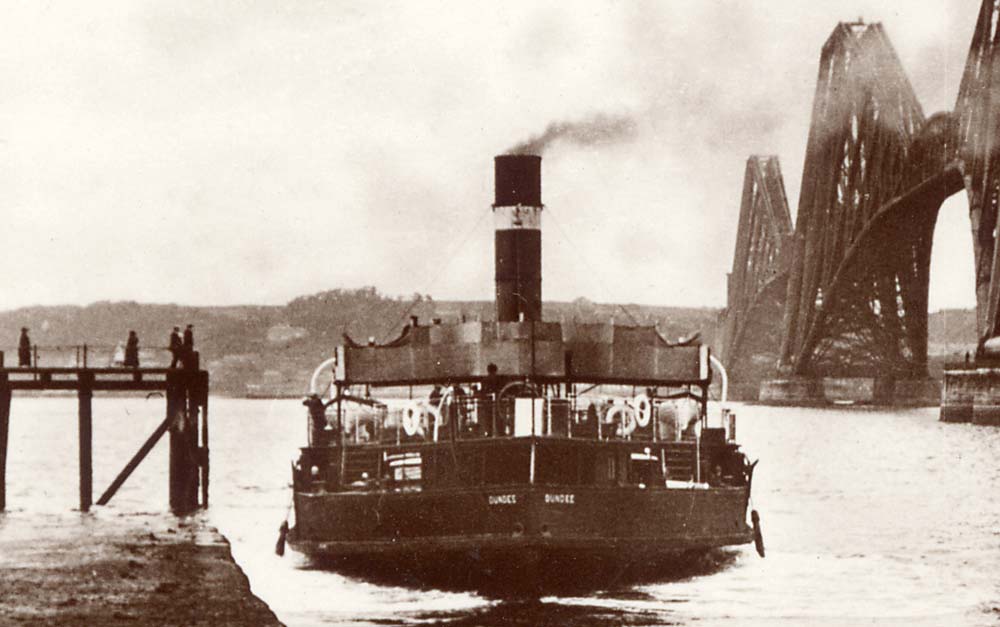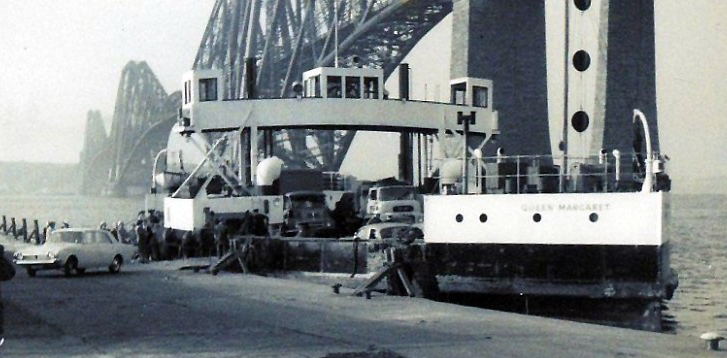The Ferries – 1920 to 1947 – back to the NBR
| < Impact of the Rail Bridge | Δ Index | 1947 to 1964 – The End > |
John Wilson died in 1919, and after unsuccessful attempts to lease the passage, the North British Railway reluctantly took over operations. “Forfarshire” had been sold by Wilson’s executors so the North British purchased another ex-Tay ferry, the “Dundee.”

“The Dundee”
She had been recently modernised, and was larger than previous vessels, carrying 997 passengers, and ten motor cars, or three lorries and two cars.
She also had a deeper draught so could only operate from the by then disused Railway Pier at North Queensferry.
Despite a public outcry, fares were increased, for the first time in sixty years, and the ferry made a profit for the first time in thirty years.
By 1930, road traffic had increased and was out-stripping “Dundee’s” capacity.
William Denny Brothers – shipbuilders of Dumbarton – approached the railway with designs for two new ferries.
The railway company countered by offering Denny the lease of the ferry, if they built the ships themselves.
Denny seized the opportunity for work in the depression-hit era, and in 1934 took over the passage with two new ferries – “Queen Margaret” and “Robert the Bruce.”

“Queen Margaret”
These were double-bowed, with clearance for a furniture van under the bridge, a clear car-deck with a turntable, and were paddle-driven for manoeuvrability.
Propulsion was by twin diesel generators powering electric motors – one per paddle wheel, through a chain drive reduction-gear.
“Queen Margaret” was of conventional riveted construction, while “Robert the Bruce” was entirely welded – the first all-welded passenger ship.
Along with a repainted “Dundee,” the ferries offered an efficient half-hourly service.
| < Impact of the Rail Bridge | Δ Index | 1947 to 1964 – The End > |